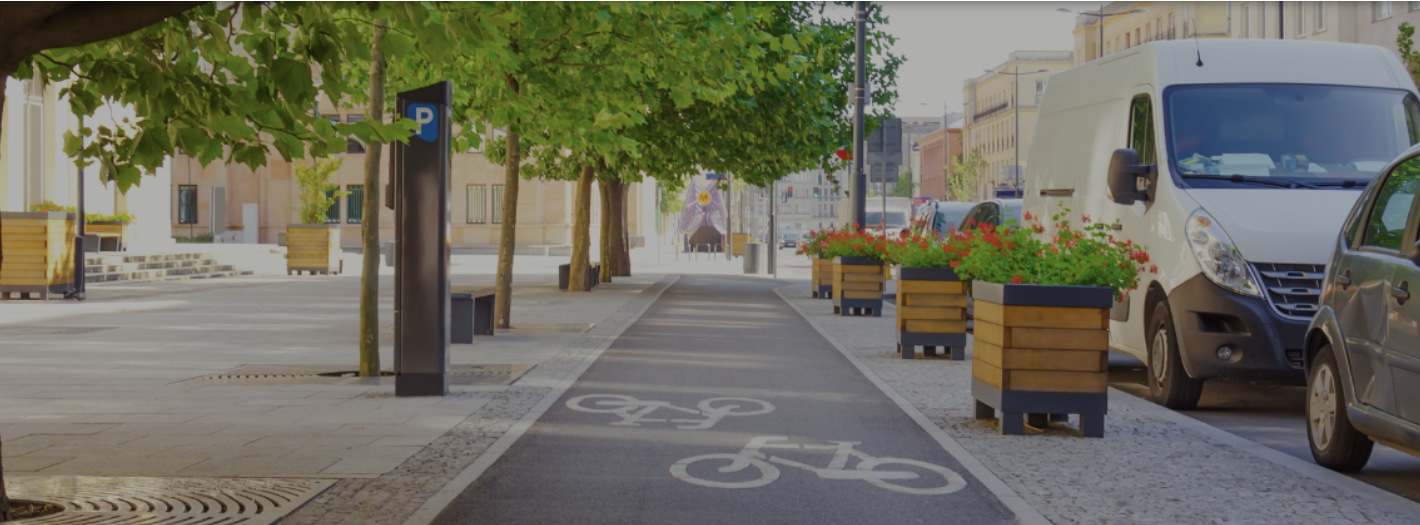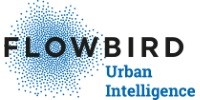Flowbird: The Future Of The Roadside Curb

Americans spend an average of 17 hours a year looking for parking. In Germany, drivers spend around 41 hours, and British drivers spend 91 hours. There’s a good chance that if you drive a car, you’ll spend a fair bit of time in your life looking for parking. Today’s curbside parking is valuable real estate, not because of its scarcity, but because of its potential.
We don’t use curbsides like we did 20 years ago because we don’t move in the same ways. We also don’t pay for things the same way or use the same software. Curbs around the world are struggling to keep up with the changes in movement and technology.
The future of the roadside curb depends on clever mobility policies to incentivise greener travel behaviours and reduce emissions, while making way for new mobility modes, such as bikes, scooters and EVs. Leveraging the curb’s full potential is key to boosting your city’s reputation as a mobility leader.
The Parking Experience Everyone Wants Today
In an ideal world, parking is a part of effortless movement.
When you stop downtown to pick up coffee and your favourite loaf of bread for dinner, parking is available. When an e-commerce truck delivers packages, it doesn’t block traffic. When you’re visiting your best friend from out of town, finding a parking spot and EV charging station shouldn’t require an hour-long hunt for a space.
Everyone wants to be able to park where they need, when they need, at a fair price.
Tourists and locals should have multiple ways to pay for parking. While some may want to pay at a meter or kiosk, many would prefer to pay on their mobile. Some may also prefer a licence plate scan connected to their account, rather than having to deal with payments at all.
Consistent management of sales channels, including tariffs, is integral to this. With the increased pressure to create more sustainable cities, dynamic tariff rules support social, economic, and environmental goals.
What’s Slowing Cities Down In Creating A Better Parking Experience?
When it comes to curbs, we think of them in three ways: paying, moving and operating.
Paying: Travellers need quick, accessible, and frictionless payment options. Payment on the operator side gets tricky because while there may only be one or two parking metre providers, there can be up to eight mobile application providers. That’s a lot of digital control to manage. Plus, it’s hard to implement and enforce regulations across providers.
Moving: When it comes to traffic flow, cities need the right number of parking spots for the type of commuters you’re attracting today, and tomorrow. That means planning for EVs, rather than fearing losing too many spots to charging stations. Spots should accommodate long-term and short-term parkers, depending on the area. One of the biggest opportunities in cities today is planning for delivery truck parking.
In 2021, Amazon delivered 7.7 billion packages globally. While it is the largest e-commerce, that’s just one organisation. Remember the last time traffic was backed up due to a package truck blocking the road? Your city’s curbs can and should account for those deliveries to keep traffic flowing with effortless movement.
Operating: Creating a strategic parking plan can only be done with the right data. Often, cities aren’t able to optimise their curbs because they don’t have enough data, or they’re using a fragmented or reactive approach.
For example, cities that use a licence plate scan approach to calculate payments might still be creating a bad user experience with payment mistakes due to IT outages. When riders are disappointed by this otherwise-innovative parking experience, they’re likely to blame the public officials.
Some businesses that offer parking solutions are driven by the goal of getting more users on the city’s app, and on improving the end user experience of that app. Yet, cities can do very little for those on the app if operators can’t easily regulate the city’s curbside.
Minimise The Time Drivers Spend Looking And Paying For Parking
Drivers need a frictionless parking experience, especially when it comes to finding a spot, and paying for it.
Ideally, cities need a hub where drivers can see where parking is available now, including assets at the spot, like EV charging stations. This enables them to get the best spot each time, without doing multiple laps throughout the city trying to find a place to park. A centralised app can also alert them if little to no parking is available, increasing ridership on public transportation during parking surges.
For payments, mobile and terminal options shouldn’t require a lot of thinking or frustration. If paying at the terminal, drivers should be able to put in their plate, which is attached to an account that can recognise their user type. The best price is applied, and there’s no walking back to the car to put a ticket in the window.
If paying by mobile, it should be easy to complete the purchase in a matter of seconds, so they can enjoy their destination, meet an urgent appointment, or continue on the rest of their journey in good time.
Make Strategic Curb Management Decisions, Not Reactive Ones
Operators need tools to keep control, configure, and innovate the curbside. With real time monitoring, for instance, operators can effortlessly adjust pricing across the city based on the dynamic needs of the day, or according to vehicle type, or even driver intent (e.g. discounting drivers making a multi-modal journey, or supporting local businesses).
This is only possible with a centralised hub with the capabilities to define the rules for parking spaces and account types.
Imagine a hot day with an ozone warning, operators can send out a notification that public transit is free for the day, and that park and go spaces are at a discount. You can also give bonus free time to EV drivers using charging stations in the city based on their account type, reducing emissions.
Parking is not a form of mobility that stands alone. Rather, it needs to be combined with other transportation solutions throughout the city.
When a driver opts to park in a garage and take a bus into a city centre, rather than driving their single occupancy vehicle, operators can reward that low-emission transportation behaviour. Likewise, during times of high congestion, operators can also increase parking charges to discourage driving. The transportation hub becomes a way to manage congestion and emissions.
Cities Will Benefit From Maximising Curb Appeal
Those who do rise to the occasion and capitalise on their curbs will make their city centres more attractive, ensure compliance of mobility policies and maximise cost efficiency. One way to do that is with Flowbird HUB.
Flowbird HUB isn’t just a reaction to urban transportation changes, but a proactive participant. The platform streamlines curb management, addressing complexities from coordination with multiple payment platforms to standardising parking rates. It also enables strategic, data-informed decision-making, which transforms urban transportation into a manageable, strategic tool.
With half a century of parking expertise, Flowbird HUB offers a 360 degree approach to curb management, aligning with broader city goals. It facilitates efficient, user-friendly, and sustainable urban development.
About Flowbird
 Flowbird solutions are used in 4,350 cities in 80 countries to make journeys effortless.
Flowbird solutions are used in 4,350 cities in 80 countries to make journeys effortless.
Our relentless desire to enable mobility, through frictionless technology, which gives back time to us all, is the driving force behind our innovations. We are dedicated to complete, data-led solutions, which can be used to inform mobility policy and make a positive impact.






Comments
There are no comments yet for this item
Join the discussion